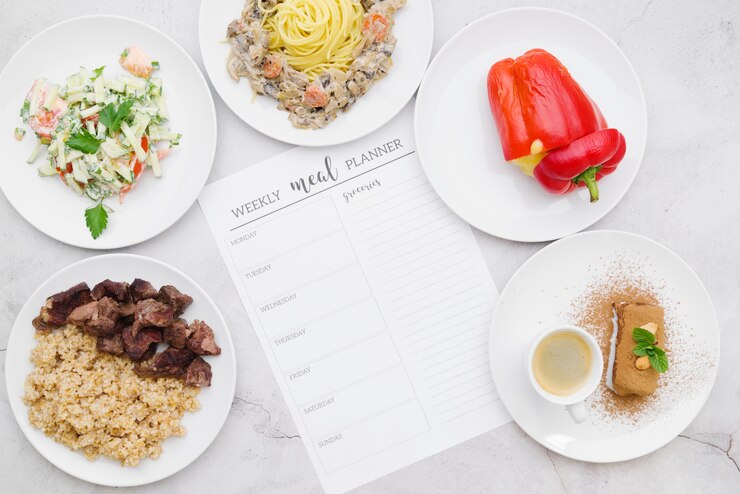Planning a catering menu can be a challenge, especially when accommodating the diverse dietary needs and preferences of your guests. Dietary restrictions, such as gluten intolerance, nut allergies, or vegan preferences, are increasingly common, and ignoring them can leave guests feeling excluded or dissatisfied.
Failing to address these needs may not only impact the guest experience but could also pose serious health risks. Fortunately, with thoughtful planning and collaboration with your caterer, you can design a menu that caters to everyone without compromising taste or quality.
What are Special Dietary Needs
Special dietary needs refer to specific nutritional requirements that deviate from the typical diet due to medical conditions, allergies, personal preferences, or religious beliefs. These needs often include restrictions, such as gluten-free for celiac disease, lactose-free for lactose intolerance, or low-sodium for those with high blood pressure.
Some individuals may require high-protein diets for muscle recovery or low-carb diets for managing diabetes. Religious practices, like kosher or halal, can also dictate specific dietary guidelines. Addressing these or any dietary restrictions ensures individuals maintain their health, comfort, and cultural or ethical practices. Catering to special dietary needs by the professional caterers requires understanding and carefully preparing suitable meal options.
Types of Dietary Restrictions
Gluten-Free Diet
A gluten-free diet excludes foods containing gluten, a protein found in wheat, barley, rye, and their derivatives. This dietary restriction is essential for individuals with celiac disease, gluten sensitivity, or wheat allergies. Common substitutes include rice, quinoa, almond flour, and gluten-free bread or pasta. Strict label reading is necessary, as gluten can be present in processed foods and sauces. Proper adherence helps prevent symptoms like digestive discomfort, fatigue, and nutrient deficiencies.
Lactose-Free or Dairy-Free Diet
This diet eliminates lactose, a sugar found in milk and dairy products, for individuals who are lactose intolerant or allergic to dairy. Symptoms like bloating, gas, or diarrhea occur when the body lacks the enzyme lactase to digest lactose. Dairy-free alternatives include almond milk, soy milk, and lactose-free cheeses. Maintaining calcium intake through non-dairy sources like leafy greens or fortified products is essential. For those with allergies, complete avoidance of all dairy, including hidden ingredients, is required.
Low-Sodium Diet
A low-sodium diet is often recommended for individuals managing high blood pressure, heart disease, or kidney issues. This restriction limits salt intake by avoiding processed and packaged foods, as they often contain high sodium levels. Fresh, whole foods such as fruits, vegetables, lean meats, and unsalted nuts are preferred. Using herbs and spices for flavor instead of salt helps maintain palatability. Monitoring sodium levels in foods and beverages is crucial to health outcomes.
Vegetarian Diet
A vegetarian diet excludes meat, fish, and poultry, focusing on plant-based foods like vegetables, fruits, grains, nuts, and legumes. Variations include ovo-vegetarian (includes eggs), lacto-vegetarian (includes dairy), or lacto-ovo vegetarian (includes both eggs and dairy). Proper meal planning ensures adequate protein, iron, and vitamin B12 intake. It is often chosen for ethical, environmental, or health reasons. Fortified foods and supplements may be necessary to prevent deficiencies.
Vegan Diet
Vegans eliminate all animal products, including meat, dairy, eggs, and even honey. This strict plant-based diet relies on fruits, vegetables, grains, legumes, and nuts for nutrition. A vegan lifestyle often extends beyond diet, avoiding leather, wool, or any products derived from animals. Proper supplementation, especially for vitamin B12 and omega-3 fatty acids, is critical. Many opt for this diet for ethical concerns, environmental sustainability, or health benefits.
Nut-Free Diet
A nut-free diet is crucial for individuals with nut allergies, which can trigger severe allergic reactions, including anaphylaxis. It involves avoiding all nuts, nut-based oils, and products processed in facilities that handle nuts. This restriction requires diligent label reading and precautionary measures, especially in packaged foods and dining out. Substitutes like sunflower seed butter or coconut products can help provide similar flavors and nutrients. Awareness and preparation are key to managing this dietary restriction safely.
Low-Carbohydrate Diet
A low-carb diet limits carbohydrates, focusing instead on proteins and fats. It is commonly used for weight management or to control blood sugar levels in conditions like diabetes. This diet restricts bread, pasta, sugary foods, and starchy vegetables, emphasizing lean meats, fish, eggs, nuts, and non-starchy vegetables. Monitoring carb intake ensures adherence and effectiveness. Variations include ketogenic diets, which drastically reduce carbs to encourage fat burning for energy.
Allergen-Free Diet
This diet involves avoiding specific allergens, such as soy, shellfish, eggs, or wheat, depending on individual sensitivities. Allergy management includes careful reading of food labels and awareness of cross-contamination risks. For children, schools and caregivers must be informed to ensure safe food options. Substitutes like egg replacers, coconut aminos (for soy), or gluten-free flours are often used. Staying vigilant about hidden allergens is critical for safety and health.
Steps to Create an Inclusive Catering Menu
Collaborate with Your Caterer
Start by discussing dietary restrictions with your caterer early in the planning process. An experienced caterer will have expertise in managing these needs and can suggest creative menu options that align with your event’s theme.
Include a Variety of Options
A diverse menu with multiple choices ensures that guests with dietary restrictions can find something to enjoy. For instance, offering a mix of plant-based, gluten-free, and allergen-free dishes creates inclusivity without singling anyone out.
Use Clear Labels and Signage
Clearly labeling dishes at the event helps guests make informed choices. Labels should specify if a dish is gluten-free, vegan, nut-free, or dairy-free. This small step reduces confusion and ensures guests feel confident in their choices.
Avoid Cross-Contamination
Cross-contamination is a significant concern for guests with severe allergies. Ensure the caterer has protocols in place, such as separate cooking equipment and preparation areas, to prevent cross-contact between allergens and safe foods.
Ask Guests for Preferences
Including a dietary preference section on RSVP forms or event invitations allows you to gather essential information in advance. This proactive approach gives you time to work with the caterer to accommodate specific needs.
Creative Menu Ideas for Dietary Restrictions
Appetizers
Gluten-Free Option: Caprese skewers with cherry tomatoes, fresh mozzarella, and basil.
Vegan Option: Mini roasted vegetable tartlets with a dairy-free crust.
Nut-Free Option: Hummus and fresh vegetable crudités.
Low-Sodium Option: Cucumber cups filled with herbed Greek yogurt.
Allergen-Free Option: Rice paper spring rolls with fresh vegetables and tamari dipping sauce.
Salads
Gluten-Free Option: Kale and quinoa salad with cranberries, sunflower seeds, and lemon vinaigrette.
Vegan Option: Arugula, pear, and walnut salad with a maple-balsamic dressing.
Nut-Free Option: Greek salad with cucumbers, tomatoes, olives, and dairy-free feta.
Allergen-Free Option: Roasted beet and orange salad with a citrus dressing.
Low-Sodium Option: Spinach and strawberry salad with a no-salt vinaigrette.
Soups
Gluten-Free Option: Creamy tomato bisque made with coconut milk.
Vegan Option: Lentil and vegetable soup with turmeric and ginger.
Nut-Free Option: Sweet potato and carrot soup with cinnamon and nutmeg.
Allergen-Free Option: Butternut squash soup with a hint of sage.
Low-Sodium Option: Minestrone soup made with fresh vegetables and salt-free broth.
Main Courses
Gluten-Free Option: Herb-crusted salmon with quinoa and seasonal vegetables.
Vegan Option: Stuffed bell peppers with wild rice, black beans, and tomato reduction.
Nut-Free Option: Lemon-roasted chicken with garlic mashed potatoes and steamed green beans.
Allergen-Free Option: Grilled tofu with stir-fried vegetables and rice noodles.
Low-Sodium Option: Baked cod with a lemon-dill crust and roasted zucchini.
Side Dishes
Gluten-Free Option: Roasted Brussels sprouts with balsamic glaze.
Vegan Option: Garlic-roasted sweet potato wedges.
Nut-Free Option: Wild rice pilaf with cranberries and herbs.
Allergen-Free Option: Steamed asparagus with olive oil and lemon zest.
Low-Sodium Option: Grilled vegetable medley with rosemary.
Desserts
Gluten-Free Option: Flourless chocolate cake with raspberry coulis.
Vegan Option: Coconut milk panna cotta with mango puree.
Nut-Free Option: Classic apple crisp topped with dairy-free whipped cream.
Allergen-Free Option: Mixed berry sorbet served in a fruit cup.
Low-Sodium Option: Poached pears with cinnamon and honey drizzle.
Beverages
Gluten-Free Option: Sparkling water infused with fresh fruit like orange and mint.
Vegan Option: Almond milk lattes or oat milk hot chocolate.
Nut-Free Option: Herbal iced teas with lemon and honey.
Allergen-Free Option: Freshly squeezed orange juice or cucumber water.
Low-Sodium Option: Unsweetened iced green tea with a splash of lime.
Frequently Asked Questions
How can I ensure my caterer avoids cross-contamination?
Choose a caterer experienced in handling dietary restrictions. Discuss their protocols for separating allergen-containing ingredients and using dedicated equipment for preparation.
Is it necessary to include dietary preference questions on invitations?
Yes, adding a dietary preference section on RSVP forms helps identify specific needs early, allowing you to prepare a menu that accommodates your guests.
What are some versatile dishes that cater to multiple dietary restrictions?
Dishes like roasted vegetable platters, quinoa salads, or lentil stews can cater to vegan, gluten-free, and nut-free requirements simultaneously.
How many dishes should I include for dietary restrictions?
Aim to include at least one appetizer, one main course, and one dessert option that cater to major dietary restrictions like vegan, gluten-free, and allergen-free diets.
What should I do if I’m unsure about specific dietary needs?
If unclear, opt for safe and inclusive options, such as plant-based and allergen-free dishes, to cover a broad range of dietary needs without risking guest dissatisfaction.
Conclusion
Accommodating dietary restrictions is a vital part of creating a memorable and inclusive catering experience. By understanding common restrictions, collaborating with your caterer, and planning a diverse and well-labeled menu, you ensure that every guest feels valued and enjoys the event. From avoiding cross-contamination to including creative options for various diets, these steps reflect thoughtful planning and a commitment to inclusivity.
However, while focusing on inclusivity, it’s equally important to avoid major mistakes when hiring a caterer. For instance, failing to thoroughly vet a caterer’s experience with dietary restrictions, overlooking their ability to handle last-minute changes, or not confirming their policies on food safety can lead to unnecessary stress and disappointments. Catering to diverse dietary needs not only enhances guest satisfaction but also elevates the event, demonstrating your care and attention to detail. By carefully selecting the right caterer and planning an inclusive menu, you set the foundation for a successful and enjoyable gathering for everyone involved.





